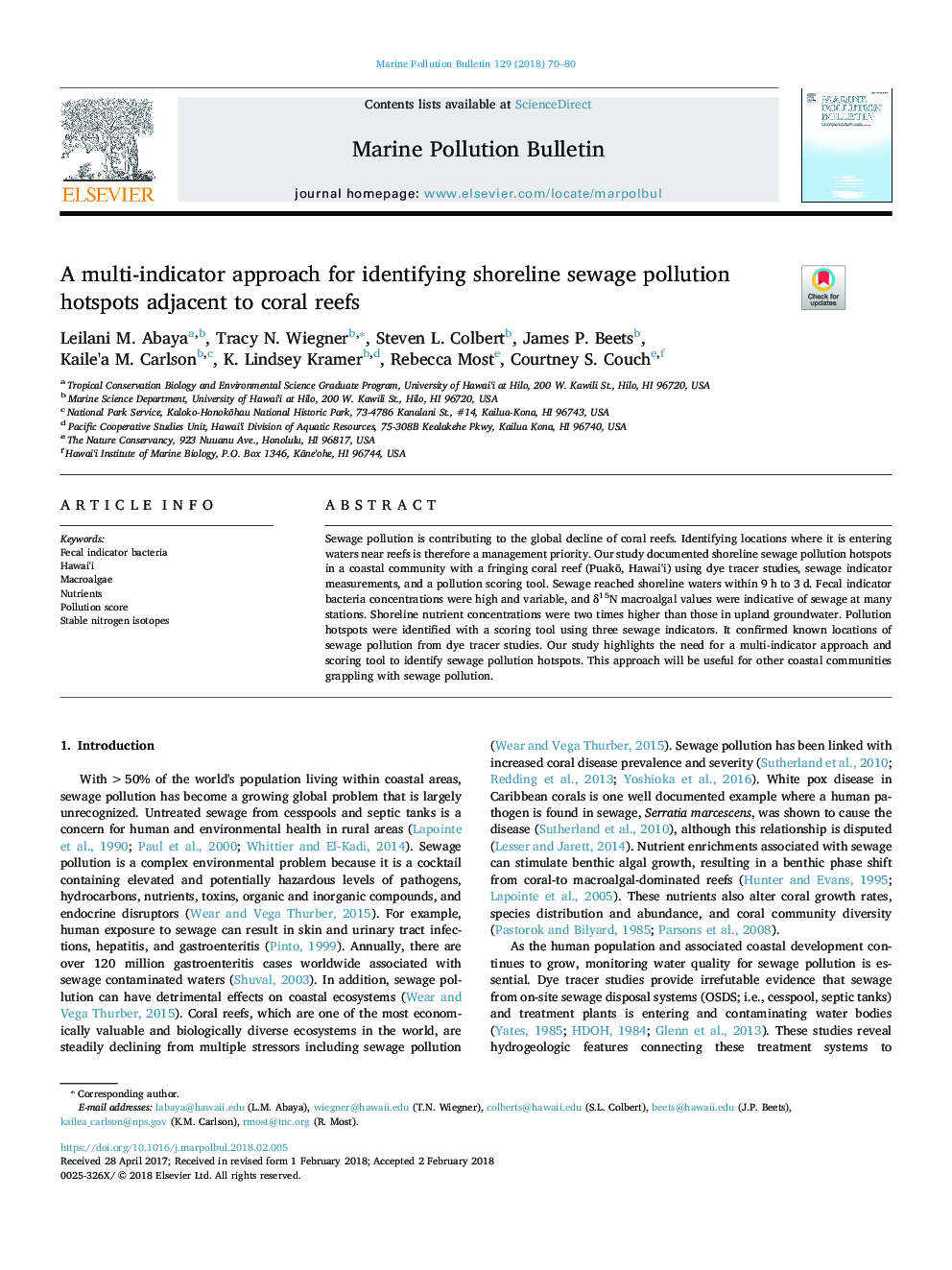| Article ID | Journal | Published Year | Pages | File Type |
|---|---|---|---|---|
| 8871458 | Marine Pollution Bulletin | 2018 | 11 Pages |
Abstract
Sewage pollution is contributing to the global decline of coral reefs. Identifying locations where it is entering waters near reefs is therefore a management priority. Our study documented shoreline sewage pollution hotspots in a coastal community with a fringing coral reef (PuakÅ, Hawai'i) using dye tracer studies, sewage indicator measurements, and a pollution scoring tool. Sewage reached shoreline waters within 9â¯h to 3â¯d. Fecal indicator bacteria concentrations were high and variable, and δ15N macroalgal values were indicative of sewage at many stations. Shoreline nutrient concentrations were two times higher than those in upland groundwater. Pollution hotspots were identified with a scoring tool using three sewage indicators. It confirmed known locations of sewage pollution from dye tracer studies. Our study highlights the need for a multi-indicator approach and scoring tool to identify sewage pollution hotspots. This approach will be useful for other coastal communities grappling with sewage pollution.
Related Topics
Physical Sciences and Engineering
Earth and Planetary Sciences
Oceanography
Authors
Leilani M. Abaya, Tracy N. Wiegner, Steven L. Colbert, James P. Beets, Kaile'a M. Carlson, K. Lindsey Kramer, Rebecca Most, Courtney S. Couch,
